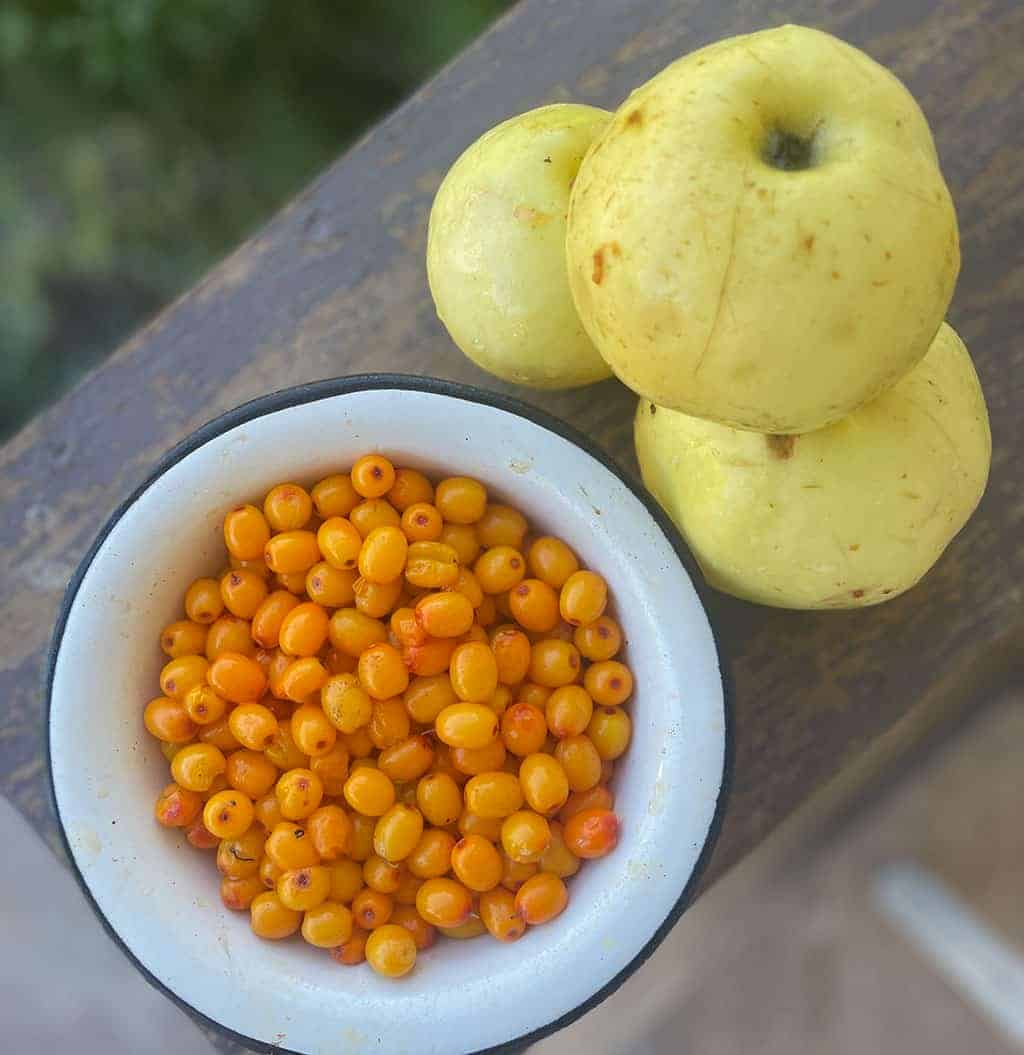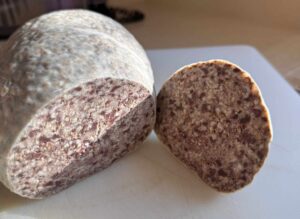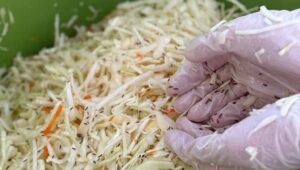I must have been six years old when I first encountered sea buckthorn. Its sizeable bush comprised of a handful of widely scattered, long branches that were adorned with narrow but firm green leaves and generously sprinkled with little oblong, orange berries.
The berries grew in tight communities, so close to each other that picking them was next to impossible. Their delicate skins would burst open with the lightest of touches and, in the hands of a child, they had no chance of survival at all.
As berries popped in my hands, they revealed delicate flesh and breathed tropical aromas. I licked my hands with anticipation of a sweet delight only to discover an out-of-this-world tartness. The juice was so acidic that it made me vibrate from the inside. Yet, it was also refreshing and flavourful. I wanted to taste more.
With an attempt to collect more berries, I launched another assault on the bush only to discover its second protective mechanism, the thorns. Hidden amongst the leaves and berries, the thorns were not many but enough to prevent uncontrollable indulgence. Ouch, I thought, and proceeded with caution.
In general, harvesting sea buckthorn berries is not easy. One strategy is to pick them off the bush, trying to keep berries intact and using caution to avoid thorns. Another is to prune the shorter branches of the bush together with the berries. The branches can then be frozen as they are, and berries can be easily knocked off later. Though it might seem like an invasive procedure, if done properly, pruning can be quite beneficial to the plant.
The third way is to ‘milk’ berries straight from the plant, squeezing the clusters of berries into a vessel held underneath. In addition to berries, leaves can also be harvested for teas and infusions. This should be done later in the year (late summer, autumn), so not to interfere with fruit production.
Historically, the sea buckthorn berry is native to Asia as well as Eastern and Northern Europe. There, it has been venerated for its medicinal and nutritional properties for centuries. To start with, sea buckthorn contains an assortment of vitamins (А, С, В1, В2, В3, В6, В9, Е and K). There is also potassium, calcium, phosphorus and other nutrients, including zinc, magnesium, niacin, boron, and omega-7 fatty acids.

The berries were once used by Russian astronauts during their space explorations to prevent radiation damage and are still favoured by the Chinese Olympians for fostering health and performance. In Tibet, sea buckthorn is known as “Liquid Gold” as it helps treat coughs, promote blood circulation, aid digestion, and nourish the body.
Even in Greek mythology the berry was revered for its properties. It is believed that sea buckthorn gave flight to Pegasus, an immortal horse that became the thunderbolt-bearer of Zeus. Greeks have also observed that horses, which were abandoned after battles, possessed great strength and coat shine, and attributed that to the fact that they grazed on sea buckthorn plants.
It comes as no surprise that now the most widespread sea buckthorn species carry the name of Hippophae rhamnoides, from the Greek word “hippo”, meaning “horse”, and “phaos”, meaning “shine”.
In Europe, most commonly, sea buckthorn is available either as a canned juice or as a frozen berry. It can often be found in Eastern European specialty supermarkets. The latter is more versatile as it contains no additives or preservatives that could interfere with culinary projects. For that, berries are first defrosted and then juiced. This juice is zingy and tart in flavour; with notes of passionfruit, orange and even pineapple.
Traditionally mixed with sweeteners to make it more palatable, the juice is a perfect partner for a variety of set desserts like a mousse, parfait or panna cotta. It is also fantastic for cakes like charlotte, where a sponge base is combined with cream, mousse or jelly (all of which can be infused with the sea buckthorn flavours) and topped with fruits.
In addition to desserts, there are also several drink recipes that utilise the berries. For example, it can be consumed as a tea, where the juice is merely combined with hot water and honey. There is also the sea buckthorn gin that follows similar preparation steps to the sloe gin infusion. Then, we have the white wine-based glühwein that is mixed with sea buckthorn and orange juice, and spiced with ginger, star anise and honey. What a perfect way to find comfort on a cold day.
The berries can also be used to make jams, compotes, and jellies or infused into salad dressings, vinegars, and sauces. Their unique flavour is so intense that a mere handful is enough to create a culinary surprise.
When visiting home this past autumn, I combined sea buckthorn with some peeled and chopped apple to make a sauce to be served with grilled meats. Though the smallest plate on the table, it was the talk of the night.
By Dr. Irina Mikhailava
|| features@algarveresident.com
Dr. Irina Mikhailava, a chef and a good food champion, happily residing in the Algarve and eating all over the world with an appetite for learning, sharing and writing. Instagram: incompanyoffood


























